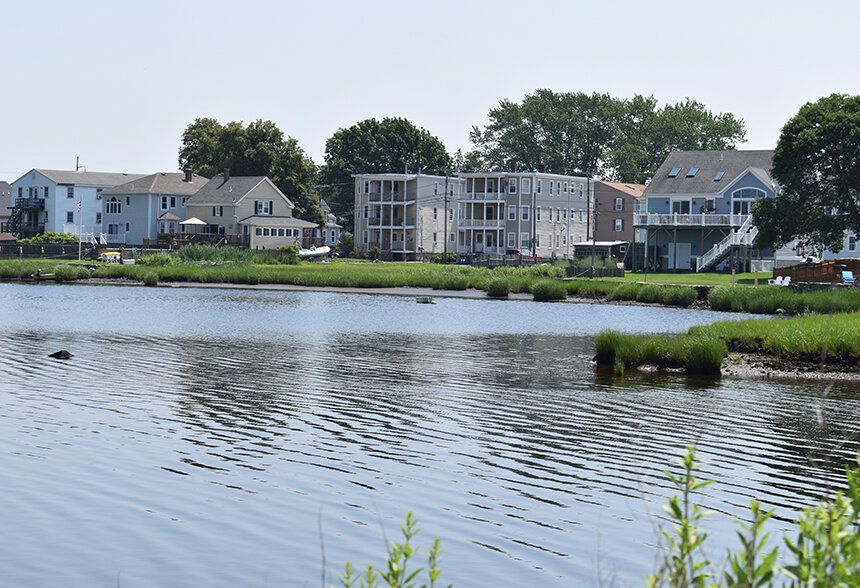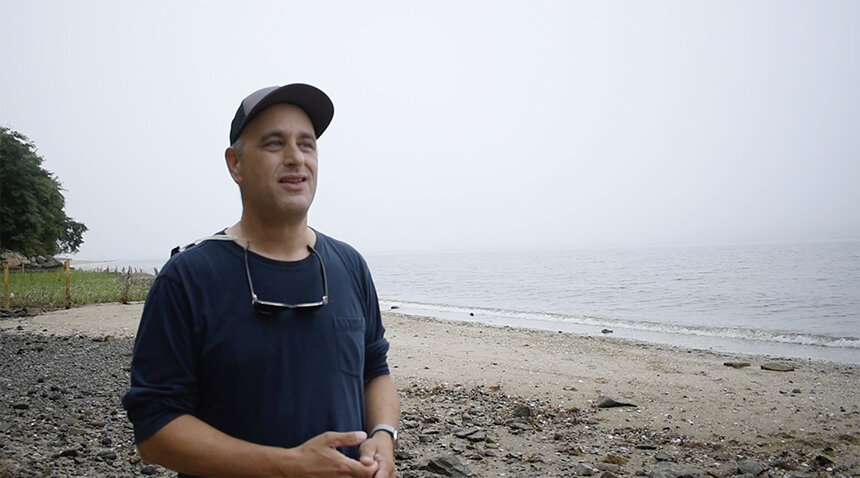Coastal Megaprojects Past and Present Show Mitigation Challenges of Climate Crisis
August 9, 2021
Coastal megaprojects are seen by some as a key part of the mitigation of the impacts of the climate crisis on some of our most vulnerable cities and areas. But they are also far from perfect solutions and are increasingly being questioned as viable investments for an uncertain climate future.
“Coastal megaprojects are, essentially, high-cost public works projects with price tags of roughly a half billion U.S. dollars or more. They have a big scope and impact a large, diverse group of citizens for better or worse,” D.J. Rasmussen, an engineer, climate scientist and policy scholar at Princeton University, said during an early March online discussion on the future of coastal megaprojects hosted by Rhode Island Sea Grant.
Providence residents live in the shadow of a famous coastal megaproject: the Fox Point Hurricane Protection Barrier.
Built between 1960 and 1966, the barrier was constructed in response to the series of hurricanes and the resulting storm surge that battered Rhode Island — and New England — from the early to mid-20th century: the “Great New England Hurricane” of 1938; the Great Atlantic Hurricane of 1944; and Hurricane Carol in 1954. At 25 feet high, it’s the tallest hurricane barrier in the country.
“Carol was one of the first storms to have a name, and was particularly damaging across New England, causing roughly 24 billion dollars in damage in today’s money, and killing 19 Rhode Islanders,” Rasmussen said.
Much of what was damaged had been previously marred in other storms, and as Rasmussen noted, “the fact that disasters can repeat damage sort of further emphasizes the need for action.”
Business and property owners in Providence were fed up with the repeated flooding they experienced during these hurricanes, especially since, at the time, there was no national flood insurance program.
“Rhode Islanders were sick of this continual flood problem … and asked their elected officials to do something about it,” Rasmussen said. He postulated that it often takes not one but multiple disasters to get government to consider a solution.
“A disaster essentially creates a window of opportunity for policy change, and through that window of opportunity, you have money, attention, other resources flow to proposed solutions,” he said.
Another factor that resulted in the barrier’s eventual creation was that, according to Rasmussen, it was proposed during “a period of unprecedented federal investment in public works.”
“This was a time when confidence in government was high, and these projects were often supported by many businesses, labor groups and the media because they often reported to lead to tremendous economic growth,” he said.
While the hurricane barrier enjoyed support from the public, labor unions and politicians at the time — and it was hailed as a first-of-its-kind, groundbreaking work of engineering — megaprojects of the present face more scrutiny.
One such coastal megaproject that was the recently proposed — and rejected — was the Boston Harbor barrier system.
Boston is increasingly at risk for coastal flooding because of the climate crisis and sea-level rise. According to a 2020 report by the nonprofit First Street Foundation, the city has more than 19,000 homes and businesses that are at risk for substantial flooding, and that number will only go up as time marches on.
This risk prompted the city to propose a storm surge barrier system in 2016, a coastal megaproject of immense scale that would have spanned from Logan International Airport, which is mostly in East Boston and partially in Winthrop, to the Seaport District and from Winthrop to Hull, and would have cost an estimated $20.5 billion.
Paul Kirshen, academic director of the University of Massachusetts Boston’s Sustainable Solutions Lab, led a study to examine the viability, longevity and effectiveness of the proposed barrier system and came to the conclusion that it wasn’t necessarily the best path forward.
“Initially, our study was to really lay out what else needed to be known before the city could make this major decision … but as we analyzed it and got more and more into it, it became very apparent to us that this didn’t make sense for the city and the region to consider building this large hurricane barrier now,” Kirshen said. “It might make sense at the turn of the century, but certainly now it doesn’t make sense.”
Kirshen and his team’s concern was that the over-time benefits weren’t worth the cost and scale of the project, and in the end, it could ultimately end up being a waste of money.
The report notes that “shore based solutions would provide flood management more quickly at a lower cost” and “provide more flexibility in adapting and responding to changing conditions, technological innovations, and new information about global sea level rise.”
What the Providence hurricane barrier and the proposed Boston Harbor barrier system have in common is the question of whether it’s better to act big now or to take small steps toward a bigger solution that lies in the future.
“We know that sea-level rise is accelerating … but one particular factor to note about these projections is the uncertainty, which makes designing and implementing these large megaprojects even more challenging,” Kirshen said. “Something that you have to consider is that back when they were talking about the Fox Point barrier is that they were designing for a fixed amount of flooding. Here, we have a changing amount of flooding over time. In fact, we don’t even know what it is.”



